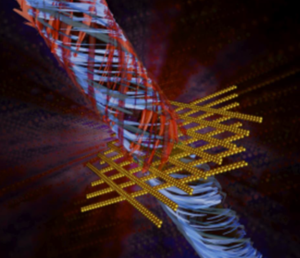Nanofabulous Seminar: From bioinspired structure formation to particle-based metamaterials

Metallic nanoparticles offer a range of interesting optical and electronic effects. A prominent example is the localized surface plasmon resonance (LSPR) due to resonant excitations of vibrations of the particles’ free-electron cloud by light. Due to the LSPR, plasmonic nanoparticles provide excellent means for controlling electromagnetic near-fields at optical frequencies, which has led to a broad range of applications in various field such as surface enhanced spectroscopy, light harvesting or photonics.
While much research has been dedicated to understanding nanoparticle synthesis and tailoring their LSPR on the single particle level [1-3], ordering particles on different length scales opens another powerful avenue towards optical and electronic functionality, as novel collective plasmonic excitations are occurring due to plasmonic coupling effects.
We focus on achieving such ordered particle arrays via assembly approaches. Colloidal self-assembly indeed succeeds in achieving well-defined colloidal clusters [4] and surface assemblies [5] in which coupling effects can be controlled. Especially when combined with biomimetic surface structuring, large area assemblies are feasible. We discuss the underlying physico-chemical principles of the assembly process and the arising plasmonic coupling effects [6,7]. Finally, we highlight perspectives for taking this assembly principle to meta-surfaces with high field enhancement and/or ultra-high circular dichroism [6, 8].
4:00pm, 13/04/2023
At the Melbourne Centre for Nanofabrication Boardroom
151 Wellington Road, Clayton, 3168
Prof Andreas Fery Head of the institute for Physical Chemistry/Polymer Physics Leibniz Institut für Polymerforschung Dresden T: +49 351 4658 225 E: fery@ipfdd.de
Click here for more information


